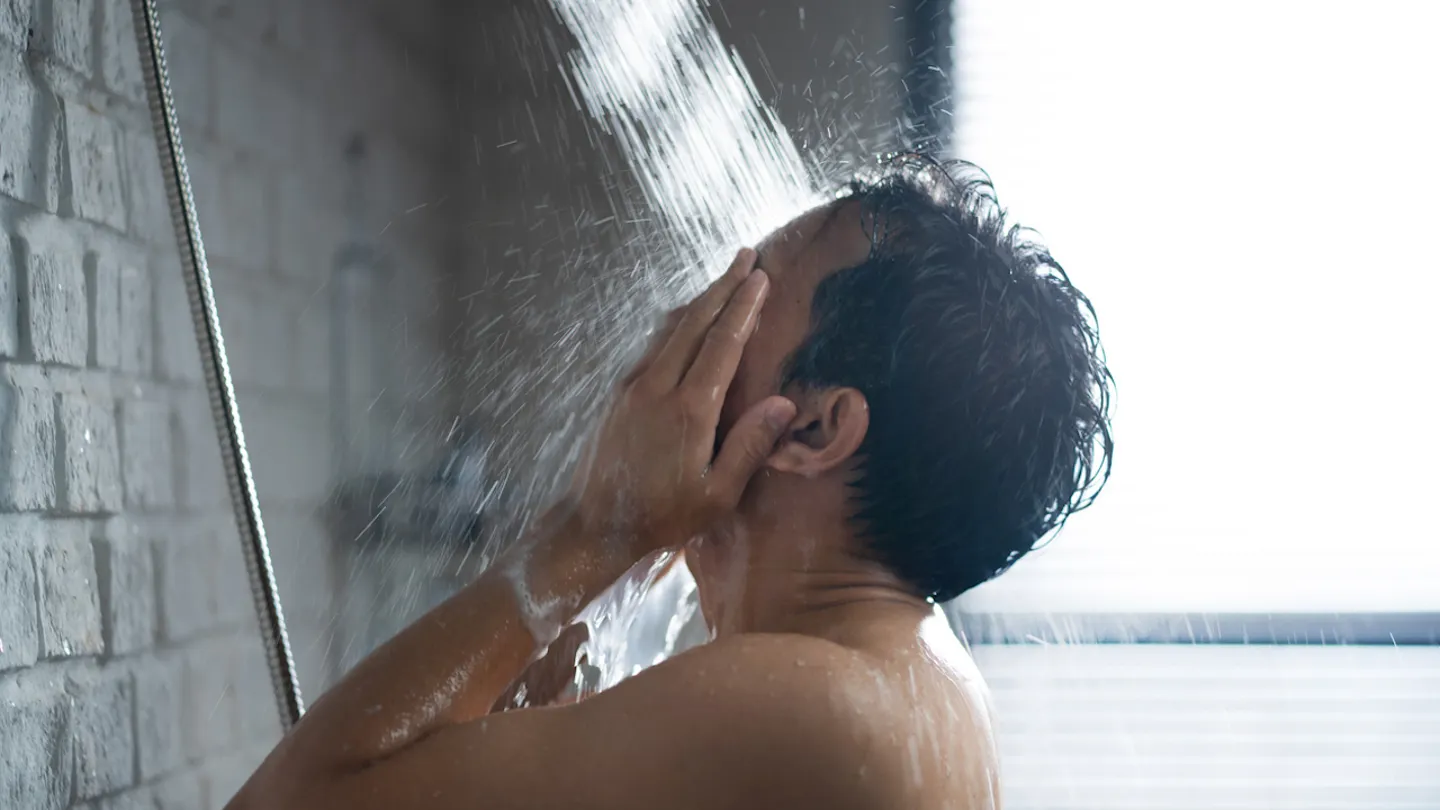The Great Shower Debate: Demystifying Your Daily Scrub with Dermatologists
Showering – a seemingly simple act we all perform regularly. Yet, the online world explodes with debates on how vigorous this cleansing needs to be. Should you be scrubbing every inch of your body with copious amounts of lather? Or is Jason Kelce, the retired NFL star, onto something with his focus on “hot spots”?
Kelce recently ignited a fiery discussion by advocating for a more targeted approach, claiming frequent full-body washes are a myth. His comments sparked questions about what truly needs cleansing, how often, and in what order. To navigate this shower etiquette minefield, we sought guidance from the experts – dermatologists.
The Top-Down or Bottom-Up Approach: Does Order Matter?
While there’s no single “medical gospel” on showering sequence, dermatologists generally suggest starting at the top and working your way down. Dr. Cindy Wassef, assistant professor at Rutgers Robert Wood Johnson Medical School Center for Dermatology, explains the logic behind this. Hair products often contain nourishing ingredients beneficial for hair, but too rich for the body. Starting with your head allows you to rinse off these potentially pore-clogging residues with your body wash. Dr. Susan Massick, a board-certified dermatologist at The Ohio State University Wexner Medical Center, agrees with a top-down approach but emphasizes that a specific order isn’t crucial.
Prioritizing Your Pits and Beyond: Where to Focus Your Efforts
Certain areas demand more frequent attention than others. Dr. Wassef highlights the importance of cleansing your groin, buttocks, and armpits every shower. These hotspots house apocrine glands, responsible for sweat production and, consequently, odor. Dr. Massick elaborates: “Sweat from apocrine glands can become odorous due to bacterial breakdown of proteins within the sweat.” To keep those B.O. blues at bay, regular cleansing is key.
Feet, often neglected warriors carrying us through the day, also deserve a good scrub. Dr. Massick emphasizes washing them with soap every time you shower. Our feet contain numerous eccrine glands, which produce odorless sweat. However, trapped in shoes all day, they can develop an unpleasant aroma. Thorough washing, followed by meticulous drying, especially between toes, becomes crucial to prevent athlete’s foot or fungal infections.
While not requiring daily attention, a gentle facial cleanser used twice a day, not necessarily in the shower, is recommended by Dr. Massick. However, areas like your back, chest, stomach, arms, and legs can be left relatively untouched, according to Dr. Wassef. You only need to enlist the help of soap when these areas become excessively sweaty.
Hair care also deserves a mention. Dr. Massick suggests skipping daily shampooing if your scalp isn’t prone to oiliness.
Daily or Not-So-Daily? The Shower Frequency Conundrum
The American Academy of Dermatology offers guidance for younger audiences but leaves the showering frequency question open for adults. They recommend daily showering or bathing after puberty, especially after swimming, sports activities, or sweating heavily.
Dermatologists generally advocate for regular showering. Routine cleansing removes dirt, bacteria, oil, and sweat, keeping skin clean and odor-free, as explained by Dr. Massick. However, she cautions against overdoing it. Excessive showering, especially with hot water, can strip your skin of its natural oils, leading to dryness.
The ideal showering frequency boils down to individual needs. Dr. Wassef suggests daily showering is perfectly acceptable, but for those with dry or eczema-prone skin, a less frequent schedule (3-4 times a week) might be better to avoid irritation. Factors like sweat level, body odor, and post-workout grime can influence your showering needs. Generally, Dr. Wassef advises against exceeding a few days without a shower, as persistent body odor might become noticeable after 3-4 days.
Choosing Your Shower Arsenal: Products for Optimal Cleansing
Product selection, while personal, can benefit from expert insights. Dr. Wassef recommends hydrating shampoos for most hair types. If you use styling products heavily, a clarifying shampoo can be used periodically. For body cleansing, unscented soap or body wash is preferred to minimize irritation. Soaps with built-in moisturizers can provide an added layer of protection against dryness.
Beyond the Basics: Tailoring Your Shower Routine for Specific Concerns
While the core principles apply to most, there are additional considerations for those with specific skin conditions.
- Dry Skin: Individuals with dry skin should prioritize lukewarm water and limit shower duration. Opt for gentle, fragrance-free cleansers and moisturize thoroughly after showering. Pat your skin dry instead of rubbing, as this can further irritate dry skin.
- Eczema: Eczema sufferers should follow a similar approach to dry skin – lukewarm water, limited shower duration, and fragrance-free cleansers. However, incorporating a moisturizer specifically formulated for eczema can provide additional relief. Look for ingredients like colloidal oatmeal or ceramides.
- Oily Skin: If you have oily skin, you might benefit from a more targeted approach. Dr. Wassef suggests focusing on cleansing oily areas like the face, chest, and back with a gentle cleanser. You can even consider a facial cleanser with salicylic acid to combat breakouts. However, avoid using harsh soaps or scrubbing excessively, as this can stimulate oil production – counterproductive to your goal.
- Sensitive Skin: Similar to dry and eczema-prone skin, individuals with sensitive skin require a gentle touch. Opt for fragrance-free, hypoallergenic cleansers and lukewarm water. Patch testing new products on a small area of your arm before applying them all over helps identify potential irritants.
The Art of Showering: Temperature, Water Pressure, and Duration
Water temperature and pressure also play a role in a healthy shower routine. Experts recommend opting for lukewarm water over scalding hot showers. Hot water can strip your skin of its natural oils, leaving it dry and irritated.
Water pressure is another factor to consider. A gentle to moderate pressure is ideal for effective cleansing without damaging the skin. Avoid using excessively strong jets of water, especially on sensitive areas.
Shower duration can also impact your skin’s health. While there’s no one-size-fits-all answer, dermatologists generally advise against excessively long showers. Aim for a moderate duration, focusing on cleansing key areas.
Beyond Cleanliness: The Shower as a Self-Care Ritual
Showering can be more than just a cleansing ritual. It can be a time for relaxation and self-care. Consider incorporating aromatherapy by using essential oils (with caution and proper dilution) or scented shower steamers to create a calming atmosphere. Playing calming music can further enhance the experience.
Conclusion: A Shower Regimen Tailored to You
By understanding your skin type, activity level, and personal preferences, you can create a personalized shower routine that promotes healthy, clean skin. Remember, consistency is key. Following these expert-backed tips will help you transform your shower experience from a chore to a practice that nourishes both your body and mind.
So, the next time you step into the shower, take a moment to appreciate this daily ritual. With a little knowledge and personalization, you can turn it into a practice that promotes both physical and mental well-being.




